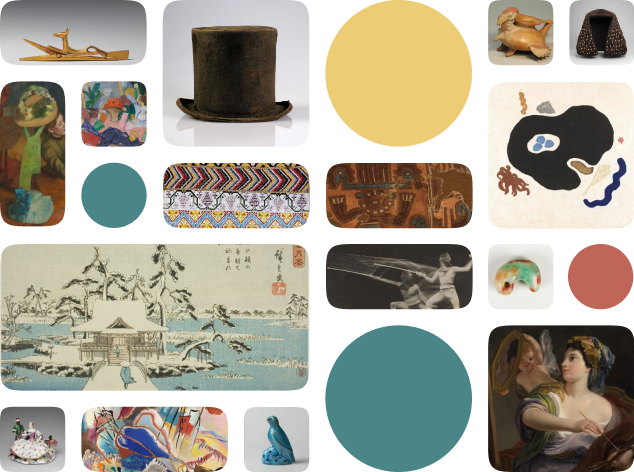Single-Strand Necklace with Taweret Amulets
Creator Name
--
Cultural Context
--
Date
Source
About the Work
Brooklyn Museum Object Description
Single strand faience necklace. In center single dark blue glazed Thueris amulet; on each side, separated by groups of ten small, blue and blue-green glazed disk beads, six smaller Thueris amulets in light and dark blue, green and purple (?) glaze. At each end a larger group of the same disk beads. Condition: Glaze on some amulets slightly worn. Otherwise intact.
In Egyptian art, one symbol could represent both a trait and its opposite. The hippopotamus could represent great danger and chaos or, alternatively, fertility and protection in childbirth. The statuette of a male hippopotamus could represent the god Seth, who embodied danger, chaos, and disorder in the world. Yet the rare limestone statuette of hippopotami mating perhaps served as a ...
In Egyptian art, one symbol could represent both a trait and its opposite. The hippopotamus could represent great danger and chaos or, alternatively, fertility and protection in childbirth. The statuette of a male hippopotamus could represent the god Seth, who embodied danger, chaos, and disorder in the world. Yet the rare limestone statuette of hippopotami mating perhaps served as a ...
Work details
"--" = no data available
Title
Creator
--
Worktype
Cultural Context
--
Material
Dimensions
Technique
--
Language
--
Date
Provenance
Style Period
--
Rights
Inscription
--
Location
Source
Subjects
--
Topic
--
Related Content
--
All Works in Curationist’s archives can be reproduced and used freely. How to attribute this Work:
Single-Strand Necklace with Taweret Amulets, ca. 1332–1292 B.C.E., New Kingdom, late Dynasty 18 (probably), Brooklyn Museum. Creative Commons-BY.
Help us improve this content!
Let our archivists know if you have something to add.
Save this work.
Start an account to add this work to your personal curated collection.
